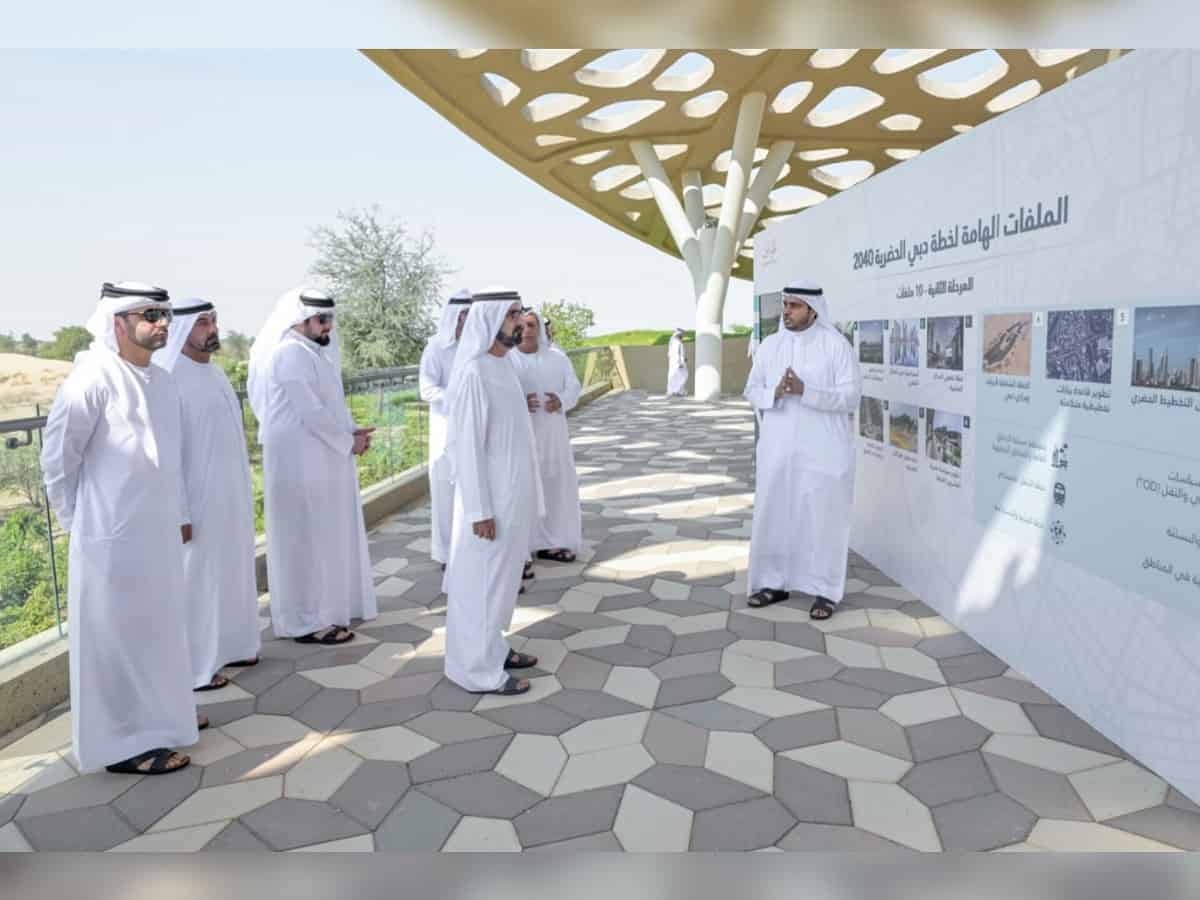
Abu Dhabi: Sheikh Mohammed bin Rashid Al Maktoum, Vice President and Prime Minister of the UAE and Ruler of Dubai, on Monday approved the second phase of the Dubai 2040 Urban Master Plan.
The second phase of the plan will include several projects under ten key initiatives.
This includes— enhancing urban centres, the Dubai real estate strategy, the urban farming plan, preserving urban heritage plan, developing the 20-minute city policy and the pedestrian network master plan.
Sheikh Mohammed also reviewed the progress of 17 projects and initiatives that were part of the initial phase of the Dubai 2040 Urban Master Plan.
“Today, we have a clear vision for the development of Dubai’s urban infrastructure and housing sector until 2040. Our goal is for Dubai to be an eco- and pedestrian-friendly city, and a city with a high yield from urban agriculture,” Sheikh Mohammed was quoted as saying by Dubai Media Office (DMO).
Second phase of Dubai 2040
The new phase includes an integrated plan for developing five main urban centres (three existing and two new centres) in Dubai, according to Emirates News Agency (WAM).
The plan also prescribes a comprehensive strategy for Dubai’s real estate sector up to 2040 to align it with the requirements of the Master Plan and strike a balance between supply and demand. It calls for proactive initiatives to manage opportunities and changes in the real estate market, achieve sustainable urban development, and boost investor confidence.
The second phase of the Dubai 2040 Urban Master Plan includes a framework for high-yield agriculture and farming by identifying suitable locations and developing the infrastructure and facilities required to ensure food security.
It also outlines plans for preserving urban heritage to enhance the emirate’s identity, promote historical areas, landmarks and buildings, and improve the tourism experience at archaeological sites.
20-minute city
The master plan also calls for developing a 20-minute city where residents can reach their destinations within a 20-minute time frame on foot or by bicycle.
The project involves developing integrated service centres with all the necessary facilities and increasing the population density around mass transit stations, allowing residents access to 80 per cent of their daily needs and destinations within 20 minutes.
Additionally, a plan will be developed to enhance and utilise urban spaces, such as alleyways, spaces underneath bridges, and squares, by augmenting the elements of well-being to make them attractive and relaxing for residents and visitors.
The second phase of the master plan involves developing an avenue for all residential neighbourhoods. It entails defining an area within the residential neighbourhoods and developing it under the principle of integrated street network where facilities and services are focused on catering to the residents’ needs. This initiative enhances well-being, supports soft mobility and reduces travel time within Dubai.
Achievements and accomplishments
With the support and follow-up of Dubai’s leadership, the Supreme Committee of Urban Planning in Dubai completed six projects, including Dubai’s National Housing Policy.
As part of the policy, a historic housing budget of 65 billion Dirham was allocated for housing citizens in Dubai, doubling the number of beneficiaries of Dubai’s housing programme. The area of the land plots allocated for housing nationals in Dubai also doubled, reaching 1.7 million square feet.
Among the completed projects was the launch of the Hatta Development Master Plan to enhance well-being. The plan aims to offer investment opportunities to local residents, support local tourism, attract investments, strengthen partnerships with the private sector, preserve heritage and nature, and promote tourism in Hatta.
The projects that will be completed next year include preparing a plan for integrating land uses and transport policies, landscaping policy, directing development in coastal areas and increasing the length of beaches, doubling the public parks and recreational areas, developing a sustainable mobility plan, and environment and sustainability plan.
The new phase includes an integrated plan for developing five main urban centres – three existing and two new – in the emirate as well. The existing urban centres include Deira and Bur Dubai, historical areas that include museums, traditional markets and historical residential areas.
The economic and trade centre of the city comprises the Dubai International Financial Centre, Sheikh Zayed Road, Business Bay, and Downtown, while the tourism and entertainment hub includes Dubai Marina and Jumeirah Lakes Towers.
The two new centres include Expo 2020 Centre, an economic hotspot featuring affordable housing and a focal point for the exhibitions, tourism and logistics sectors; and Dubai Silicon Oasis Centre, a science and technology and knowledge hub.
